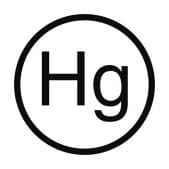203777
Mercury(II) chloride
99.999% trace metals basis
Synonym(s):
Mercuric chloride
About This Item
Recommended Products
vapor pressure
1.3 mmHg ( 236 °C)
assay
99.999% trace metals basis
form
solid
reaction suitability
reagent type: catalyst
core: mercury
mp
277 °C (lit.)
SMILES string
Cl[Hg]Cl
InChI
1S/2ClH.Hg/h2*1H;/q;;+2/p-2
InChI key
LWJROJCJINYWOX-UHFFFAOYSA-L
Looking for similar products? Visit Product Comparison Guide
Disclaimer

signalword
Danger
Hazard Classifications
Acute Tox. 2 Oral - Aquatic Acute 1 - Aquatic Chronic 1 - Muta. 2 - Repr. 2 - Skin Corr. 1B - STOT RE 1
Storage Class
6.1A - Combustible acute toxic Cat. 1 and 2 / very toxic hazardous materials
wgk_germany
WGK 3
flash_point_f
Not applicable
flash_point_c
Not applicable
ppe
Eyeshields, Faceshields, Gloves, type P3 (EN 143) respirator cartridges
Choose from one of the most recent versions:
Already Own This Product?
Find documentation for the products that you have recently purchased in the Document Library.
Our team of scientists has experience in all areas of research including Life Science, Material Science, Chemical Synthesis, Chromatography, Analytical and many others.
Contact Technical Service










